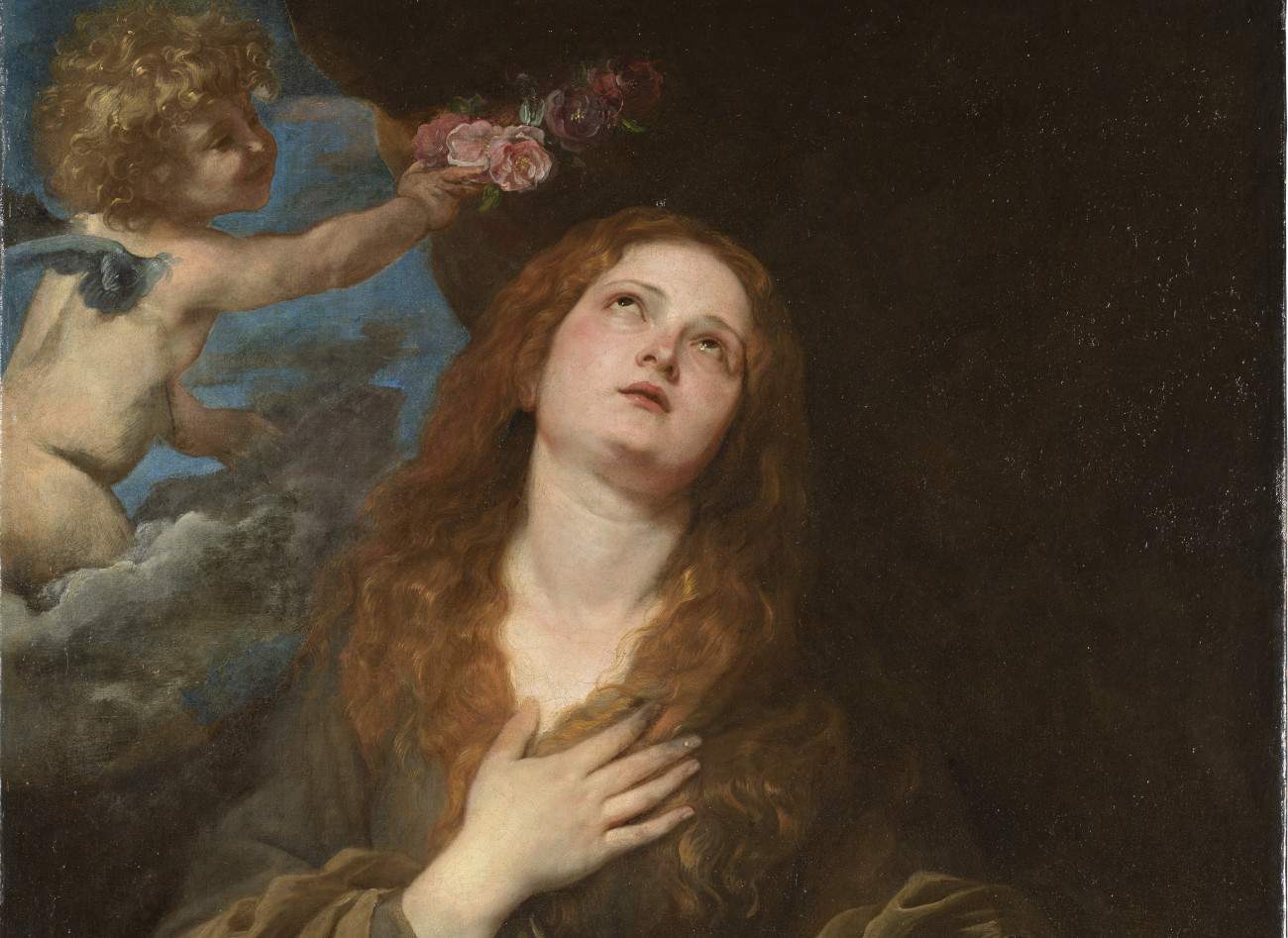Palermo celebrates its patron saint: the iconography of Saint Rosalie in the masterpieces of great artists
On the occasion of the jubilee anniversary of the 400th anniversary of the discovery of the remains of St. Rosalie, the Sicily Foundation presents the exhibition The Ecstasies of St. Rosalie at the Villa Zito Art Gallery in Palermo. Antoon van Dyck, Pietro Novelli, Mattia Preti, Luca Giordano, which can be visited from Feb. 24 to May 19, 2024, curated by Maria Concetta Di Natale. Also on display for the first time will be a rare specimen from the collection of engravings made by Philips de Mallery in 1629 from drawings by Antoon Van Dyck, S. Rosaliae Virginis Panormitanae Pestis Patronæ iconibus expressa, engraver Cornelius Galle, Antwerp, identified by Maria Concetta Di Natale and Sergio Intorre in the antique collection of the Sicily Foundation Library during scientific research preparatory to the exhibition project. The exhibition will feature some of the most significant masterpieces in the history of modern European art depicting the patron saint of Palermo, from the Prado Museum and the Real Academia des Bellas Artes de San Fernando in Madrid, the Diocesan Archives of the Archdiocese of Malta, the Diocesan Museum of Palermo, and the Royal Palace of Palermo-Federal Foundation of Frederick II.
Theiconography of Saint Rosalie is also represented in the exhibition through the display of volumes printed in Italy and Europe between the 17th and 18th centuries, accompanied by engravings made from drawings by artists of the period, among which those of van Dyck in particular stand out. The works reflect a mixture of styles and sensibilities that manage to offer a rich and detailed perspective on Baroque spirituality and its various artistic manifestations. This phenomenon originated during Antoon van Dyck’s stay in Palermo in 1624-1625. Van Dyck’s influence on the local iconographic tradition is evident in the later works of artists such as Pietro Novelli, Mattia Preti and Luca Giordano, which represent an important core of the impact of his imagery on religious iconography. The exhibition and related catalog are curated by Maria Concetta Di Natale, with technical and scientific coordination by Sergio Intorre. The publication includes contributions from, among others, María Antonia Herradón, Chief Conservator of the Real Academia des Bellas Artes de San Fernando in Madrid, Don Nicholas Joseph Doublet, Director of the Diocesan Archives of the Archdiocese of Malta, Alexander Debono, Visiting Senior Lecturer at the University of Malta.
“We are thrilled to present an exhibition that celebrates the figure of Saint Rosalie, Patroness of Palermo, through artworks of inestimable historical and artistic value from prestigious European and Sicilian museums and institutions. In addition, the exceptional discovery of the specimen of the 1629 printed volume with engravings based on drawings by Antoon Van Dyck made by Philips de Mallery in the collection of ancient books kept in the Library of Palazzo Branciforte represents an important enrichment to our understanding of the iconography of Saint Rosalie and testifies to the Sicily Foundation’s commitment to research and enhancement of Sicily’s cultural heritage. I am grateful to all those who have made this extraordinary exhibition possible, and I am confident that this project will help spread scientific knowledge and appreciation of the rich artistic tradition that originated in Sicily 400 years ago and then spread to modern artistic events,” says Raffaele Bonsignore, president of the Sicily Foundation.
“The 400th anniversary of Santa Rosalia calls for the participation of all the cultural realities of Palermo to contribute, together with the Municipality and the Diocese, to the realization of an important and significant path of celebration of the Santuzza during this Rosalian year, during which religious faith and secular tradition are combined in the sign of a historical and deep-rooted custom. It is precisely in this direction that the exhibition ”The Ecstasies of Saint Rosalie“ goes, for which I thank the Sicily Foundation and its president Raffaele Bonsignore, exhibition curator Maria Concetta Di Natale and art director Laura Barreca. The exhibition scheduled in the Villa Zito Art Gallery confirms how Santa Rosalia is an icon that has found historical and artistic recognition in Europe as well: the City’s aspiration is that the celebrations of the 400th will further increase its international scope,” says Roberto Lagalla, mayor of the City of Palermo.
“The exhibition highlights how the cult of the Saint and her iconography spread from Palermo throughout Europe, thanks mainly to figures such as Antoon Van Dyck, who was in Palermo between 1624 and 1625, during the most acute phase of the plague epidemic, witnessing the establishment of the cult of Rosalie in Palermo and the birth of theiconography of the saint, to which the Flemish artist contributed right from the start, through a nucleus of paintings of similar subject matter likely commissioned by the Palermo nobility of the time and now on display in museums and collections around the world,” explains Maria Concetta Di Natale, curator of the exhibition.
Image: Antoon van Dyck, Saint Rosalie, detail (1624-1625: oil on canvas, 106 x 81 cm; Madrid, Museo del Prado)
 |
| Palermo celebrates its patron saint: the iconography of Saint Rosalie in the masterpieces of great artists |
Warning: the translation into English of the original Italian article was created using automatic tools. We undertake to review all articles, but we do not guarantee the total absence of inaccuracies in the translation due to the program. You can find the original by clicking on the ITA button. If you find any mistake,please contact us.




























